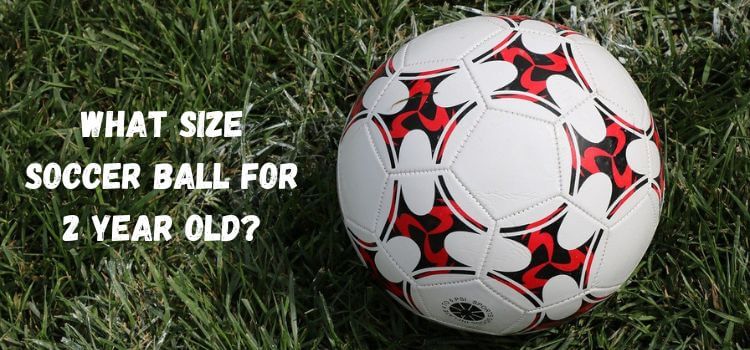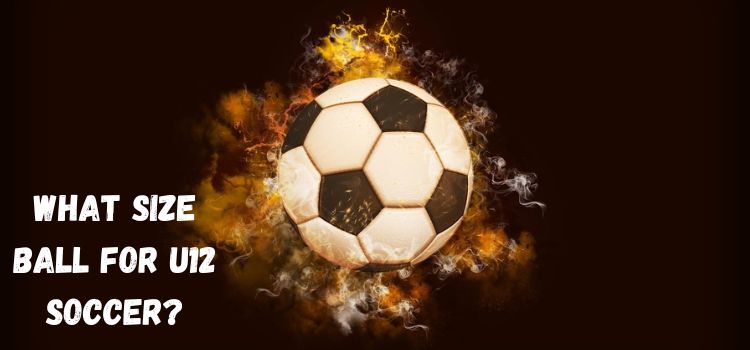As an Amazon Associate, I earn from qualifying purchases
If you’ve ever wondered “How much does a soccer ball weigh?” you’ve come to the right place. When it comes to the weight of a soccer ball, many factors come into play. The standard weight of a regulation soccer ball is between 410 and 450 grams or 14-16 ounces, but the weight of a ball can vary depending on its size and material.
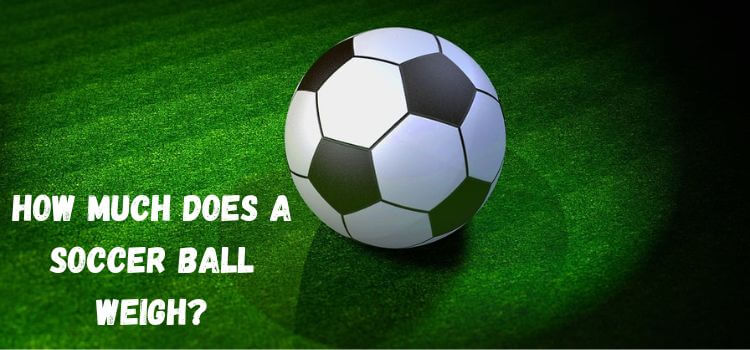
Understanding the weight of a soccer ball is essential for players, coaches, and anyone involved in the sport. Our goal in this blog post is to examine the different factors that can affect the weight of a soccer ball and provide valuable information for anyone looking to understand this aspect of the game.
Size 5 Adult Competition and Regulation Soccer Ball
This standard size for adult soccer balls is used in professional leagues and tournaments. It has a circumference of 27-28 inches and a weight of about 14-16 ounces (410 and 450 grams).
The size 5 ball suits players aged 12 and above, including adults. It is recommended for all levels of play, from recreational to professional, as it perfectly balances control and power.
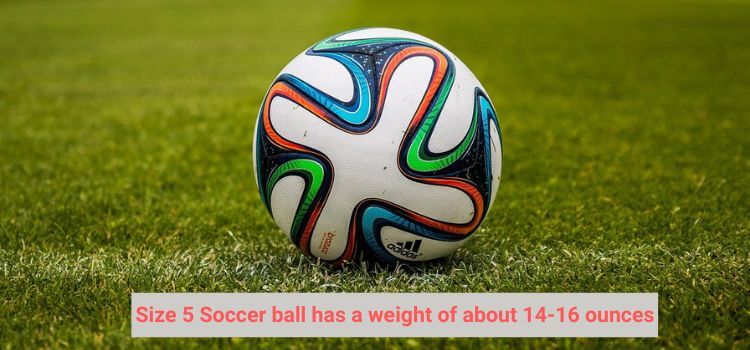
When purchasing a size 5 adult competition and regulation soccer ball, look for official certifications such as FIFA-approved or NFHS-approved. These ensure that the ball meets quality standards set by governing bodies in the sport.
Size 4 Youth Competition Soccer Ball
For players aged 8 to 12, a size 4 youth competition soccer ball is the ideal choice. It has a 25-26 inches circumference and weighs approximately 12-14 ounces.
This size suits players transitioning from smaller-sized balls to the official size 5 ball. As they develop their skills, they are provided with enough control and power for their age group.
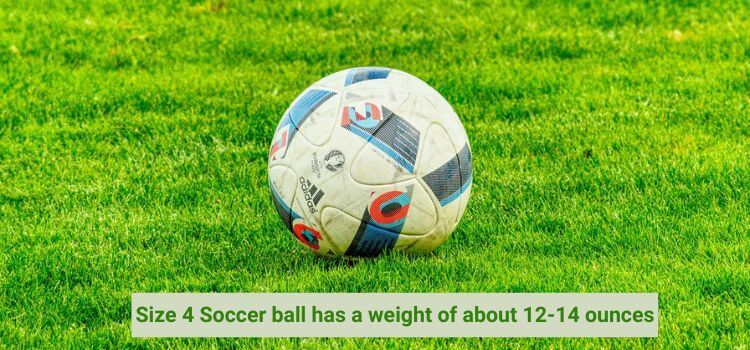
Like the size 5 ball, look for certifications when purchasing a size 4 youth competition soccer ball. These certifications ensure that the ball meets safety and quality standards set by governing bodies in the sport.
Size 3 Junior Training Soccer Ball
The size 3 junior training soccer ball is perfect for young players aged 8 and below. With a circumference of 23-24 inches and weighing around 11-13 ounces, this is the smallest-sized ball used in official games.
This size is ideal for young players as it allows them to develop their skills while maintaining proper control and technique. It also helps prevent potential injuries from using a more significant and heavier ball.
When purchasing a size 3 junior training soccer ball, also look for certifications. These certifications ensure the ball meets safety and quality standards, making it suitable for youth competitions.
Ultimately, the right soccer ball depends on your needs and preferences. With a wide variety of sizes, materials, designs, and specialized options from reputable brands such as Adidas, Nike, and Puma, you can find the perfect ball to enhance your skills on the field. So don’t settle for just any old ball – choose one that will help elevate your game to the next.
Futsal Soccer Ball
One type of specialized soccer ball is the futsal ball. Futsal is a fast-paced indoor version of soccer played on hard surfaces such as gym floors or concrete courts. The smaller, heavier design makes controlling and manoeuvring on these surfaces easier, promoting quick passing and close control.
Futsal balls typically have a low-bounce inner core and a durable outer cover, allowing for better ball control and reduced rebound during gameplay. They are also slightly smaller than traditional soccer balls, usually around 24-26 inches in circumference. This size is perfect for the smaller playing area of futsal, making it easier to keep the ball in play and maintain possession.
In terms of weight, futsal balls are generally heavier than regular soccer balls, weighing between 400-440 grams. This added weight helps players develop more decisive footwork and overall ball control by requiring more effort to move the ball. The heavyweight also allows for more powerful shots without compromising accuracy.
How much does a World Cup soccer ball weigh?
A standard FIFA World Cup soccer ball weighs 14-16 ounces (400-450 grams). The exact weight may differ slightly from tournament to tournament, depending on the manufacturers and regulations. The weight of a soccer ball is substantial because it affects its flight and bounce during a game.
A heavier ball may be more challenging to control, whereas a lighter ball may travel faster and bounce differently. Therefore, players must adjust their play style based on the ball’s weight.
The ball’s weight in futsal is even more critical as it is smaller and typically weighs between 13 and 14 ounces (368 and 425 grams). This allows for tighter control and precise passing, making it ideal for the game’s fast-paced nature. Futsal players must have quick reflexes and excellent ball control skills to be successful, and the lightweight ball helps facilitate this.
Soccer Ball Weigh Depends On The Material Used
It’s essential to remember that the material used to construct a soccer ball can affect its weight. The most common materials for soccer balls are leather, synthetic leather, and polyurethane (PU). Leather balls tend to be heavier due to their natural fibres, but they are also more durable and provide a better feel and touch on the ball.
Synthetic leather balls are lighter than leather but offer similar durability and performance. PU balls are the most lightweight option, with a lower weight, making them easier to control and manoeuvre on the field.
The Size Of The Soccer Ball Matters
Size is another factor that can influence a soccer ball’s weight. Soccer balls come in different sizes for different age groups and leagues.
The Importance Of Inflation
In addition to material and size, inflation is another vital factor regarding soccer balls. The internal air pressure inside the ball can significantly affect its weight and performance on the field. A properly inflated soccer ball will have a consistent shape and bounce, allowing for more accurate passes and shots.
It is recommended to check the inflation of your soccer ball before each use and periodically throughout a game or training session. The recommended pressure for standard size 5 balls is 8.5-15.6 psi (pounds per square inch). The recommended pressure may vary for younger age groups and more petite-sized balls.
The Outside of a Soccer Ball: The Cover
The outer layer of a soccer ball, commonly called the cover, is a vital aspect to consider when purchasing a ball. The material and design of the cover can significantly affect the overall feel and performance of the ball.
Traditionally, soccer balls were made with leather covers. While leather provides a good grip and touch on the ball, it is less durable than other materials. Nowadays, most soccer balls are made with synthetic materials such as polyurethane (PU) or thermoplastic polyurethane (TPU). These materials are more durable and weather-resistant compared to traditional leather covers.
Another popular option for soccer ball covers is rubber. Rubber-covered balls are typically used for recreational play and training due to their durability and low cost. However, they may provide a different touch and control than other materials.
The design of the cover is also an essential factor to consider. Soccer balls with a smooth and seamless cover are preferred for their consistent flight and accuracy. Some balls also have textured covers or panels that can enhance grip and control.
In addition to the cover’s material and design, the ball’s construction is crucial in determining its performance. A high-quality soccer ball will have multiple layers of lining and backing, which help maintain its shape and provide a more responsive bounce.
It’s essential to pick a soccer ball that fits your specific needs and playing style. For example, if you play on turf or artificial surfaces, look for a ball with a reinforced outer layer to withstand harsher conditions. On the other hand, if you often play in wet or rainy weather, choosing a ball with water-repellent properties can help maintain its grip and durability.
Inside a soccer ball: The bladder and stitching
Now, let’s look at what’s inside a soccer ball. The bladder is the innermost layer of the ball, and it holds the air that gives the ball its bounce. Bladders can be made from natural or synthetic rubber, but high-quality balls typically have a latex bladder for better responsiveness.
The stitching holds all the layers together and creates the iconic hexagonal pattern on most soccer balls. Traditionally, soccer balls were hand-stitched, which required skilled artisans to ensure consistency and durability. However, nowadays, most balls are machine-stitched, which allows for faster production but may sacrifice some quality.
It’s also worth noting that different stitches can affect a ball’s performance. For example, a ball with fewer stitches will have a smoother surface and may travel faster but may also be less durable. On the other hand, more stitches can provide better control and durability, but at the cost of speed.
How much does heavy-duty uty soccer ball weigh?
Different governing bodies have additional regulations and expectations regarding soccer ball weight. However, weight variations exist for specific purposes, such as Futsal or indoor soccer balls.
In professional matches, the FIFA-approved soccer ball must weigh between 14-16 ounces, while youth players may use lighter balls to suit their needs. Heavy-duty or training balls may have more layers and, therefore, weigh slightly more than a regular match ball.
It’s essential to consider the weight of a soccer ball when purchasing one for yourself or your team. Heavy-duty soccer balls may be the right choice if you’re looking for a durable option that can withstand rough play.
These balls are usually made with more than four layers of material, making them thicker and heavier. They are designed to withstand solid kicks and challenging training sessions without losing shape or durability.
Moreover, heavy-duty soccer balls often have reinforced inner linings or rubber bladders that help maintain their roundness and prevent air leakage. This feature is especially crucial for outdoor play on rough surfaces as it ensures a longer lifespan for the ball.
Conclusion of Soccer Ball Weigh
Finally, consider the ball’s weight when choosing the right soccer ball for your game or training. It varies depending on the age group and level of play, but a soccer ball usually weighs between 14 and 16 ounces.
Your performance on the field will improve if you understand the weight of a soccer ball. So, next time you’re shopping for a soccer ball, remember the importance of finding the right weight.
Read Our More Articles
- what size soccer ball for 2 year old
- What Size Ball for U12 Soccer? Find Out Here!
- What Size Is A Pro Soccer Ball? The Ultimate Guide
As an Amazon Associate, I earn from qualifying purchases

